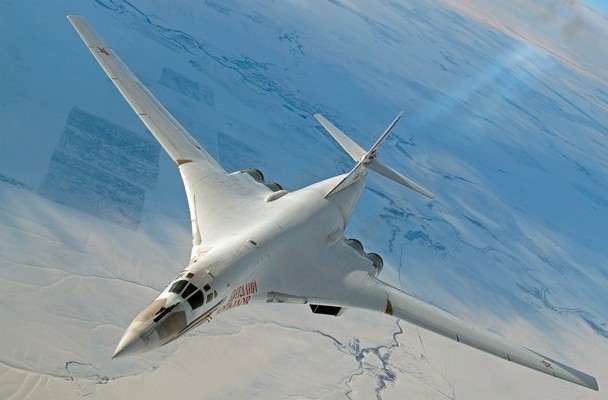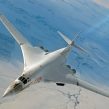
Blackjacks, Hypersonic Aerial Vehicles and the Defense of Crimea: Russia’s Futuristic Challenge to the West?
Publication: Eurasia Daily Monitor Volume: 12 Issue: 141
By:

Russian military media coverage across a range of modernization and strategic-level issues inadvertently reveals planning weaknesses within the defense establishment. Plans to modernize part of the strategic bomber fleet, develop high-tech hypersonic strike capabilities, and consolidate Crimea’s defense conceal Moscow’s deeper uncertainty about the nature of countering future threats to the Russian state, stressing missile defense as a threat, and building a defense of Crimea that currently seems potentially inadequate; such initiatives are taking place in the context of the domestic defense industry failing to meet modernization targets (RIA Novosti, July 16).
Moscow has thus played its “Blackjack” card—the North Atlantic Treaty Organization’s (NATO) classification for the Tu-160 strategic bomber. In the spring of this year, Defense Minister Sergei Shoigu announced that serial production of this platform would resume, repackaged as a new aircraft with modern equipment—with an old-style airframe. On July 16, Deputy Defense Minister Yury Borisov, who oversees arms procurement, said an industry and trade and defense ministry working group will draft such work and enlist partners to modernize and produce Tu-160 M2s. Borisov explained that the fuselage and aircraft performance will be maintained, though the avionics and armament system will change, promising a “150 percent” increase in combat efficiency. The initiative itself appears almost symbolic. The Tu-160 went into production in 1984 and was suspended in 1992—the same year that strategic bomber flights to remote regions were also abandoned. In August 2007, President Vladimir Putin ordered the resumption of these flights, which have, among other Russian Air Force activity, intensified around NATO’s airspace during the past 18 months (Rossiyskaya Gazeta, July 17).
The strategic bomber motif resurfaced in the guise of “protecting” Crimea, after much defense ministry–fueled speculation concerning deploying strategic assets to defend the peninsula culminated in an official announcement on July 22. As expected, a squadron of Tu-22M3 strategic bombers will deploy to protect Crimea “in the nearest future.” However, this is sold as a response to the United States’ deployment of missile defense components in Romania. A Russian Ministry of Defense source stated, “At this stage, it is seen as sufficient to deploy a squadron of Tu-22M3s on an aerodrome in Crimea. Its combat capabilities sufficiently strengthen aviation cover in the waters of the Black Sea,” adding, “It cannot be ruled out that in the future, the Tu-22M3 group in Crimea could be increased to a regiment.” The move is justified as a countermeasure against the US move in Romania. On July 21, the defense ministry said that the US missile defense base in Romania would become a high-level target for Russian strikes in an escalating future crisis (Interfax, July 21-22).
Indeed Russia’s strategic bombers in general and the Tu-22M3 especially have been the subject of lavish domestic praise, with Russian articles reminding readers of achievements in the late Cold War period, including penetrating NATO airspace and gathering as yet unreleased aerial photographs (Nezavisimoye Voyennoye Obozreniye, July 24). Despite this, quite apart from the costs of renovating runways in Crimea, the move to locate strategic bombers there makes little military sense; in theory, it actually renders such assets vulnerable to enemy attack and would make more sense to base them deeper inside Russian territory.
It seems the defense ministry information machinery wants to emphasize the modernization narrative, even if against all economic odds, while attacking missile defense and demonizing the United States. A remarkable illustration of this came on July 22, with official comment on the secretive “Object 4202” project, which reportedly seeks to develop a hypersonic aerial vehicle capable of overcoming missile defense. According to a defense industry source cited by Interfax, successful completion of the project in the future will see Russia possessing a hypersonic aerial vehicle capable of overcoming any antimissile defense system. Russia has test-launched this experimental asset from the Baikonur Cosmodrome in February 2015, and the platform will reportedly be nuclear capable (Interfax, July 22; EngineeringRussia, June 30).
The narrative is interrupted by two disturbing factors: the grand-scale military modernization is failing to yield its targets, and the aging bomber forces show severe signs of deterioration under the strain of upping the tempo of testing NATO responses. On July 16, Deputy Defense Minister Borisov told President Putin during a video conference that the modernization targets are not being achieved. He said defense contracts fell behind schedule, including in the areas of producing navy guard vessels, amphibious aircraft, components for surface-to-air missiles (SAM), as well as weapon launch systems for the Tu-160 strategic bomber. Borisov attributed this to Western sanctions and the poor condition of the domestic defense industry; the government response to create an overseeing committee to investigate the issues fails to address underlying problems of corruption and lack of pricing transparency (The Moscow Times, July 19). By July 24, Shoigu ordered an investigation into a wave of Russian Air Force crashes involving seven assets in as many weeks, including strategic bombers.
As far as defense planning for the illegally annexed Crimean peninsula is concerned, the official line is that the creation of a number of “force groupings” is sufficient to ensure the protection of this newly acquired part of Russian territory. Yet, the need for Tu-22M3s seems inconsistent with this message. Although the top brass remains largely silent on the sensitive issue of creating long-term defense plans for Crimea, other Russian military specialists question whether the forces on the ground could withstand a modern enemy attack. Lieutenant-General (retired) Alexander G. Luzan, a former deputy chief of the Soviet Army Air Defense and a doctor of technical sciences, strongly advocates an integrated air-naval defense that would facilitate a C4ISR (command, control, communications, computers, intelligence, surveillance and reconnaissance) defense of the peninsula, even against a network-centric adversary (Nezavisimoye Voyennoye Obozreniye, July 24).
Luzan has in mind the eventual creation of a complex automated system of air-naval defense (Kompleksnaya Avtomatizirovannaya Sistema Vozdushno-Morskoy Oborony—KAS VMO). The KAS VMO would unite all forces and resources into a single information space. The objective of the KAS VMO would be to repel a high-tech enemy. Luzan’s thinking relates to how to repel assaults (like the ones over Kosovo in 1999 or against Libya in 2011) on Russian forces, and it raises questions on Moscow’s evaluation of its future potential enemy (Nezavisimoye Voyennoye Obozreniye, July 24). In the absence of this system, Moscow will utilize strategic messaging to convey to other actors that Crimea is considered part of sovereign Russian territory. Meanwhile, the high-tech aspirations of military modernization will need an eventual easing of Western sanctions.




